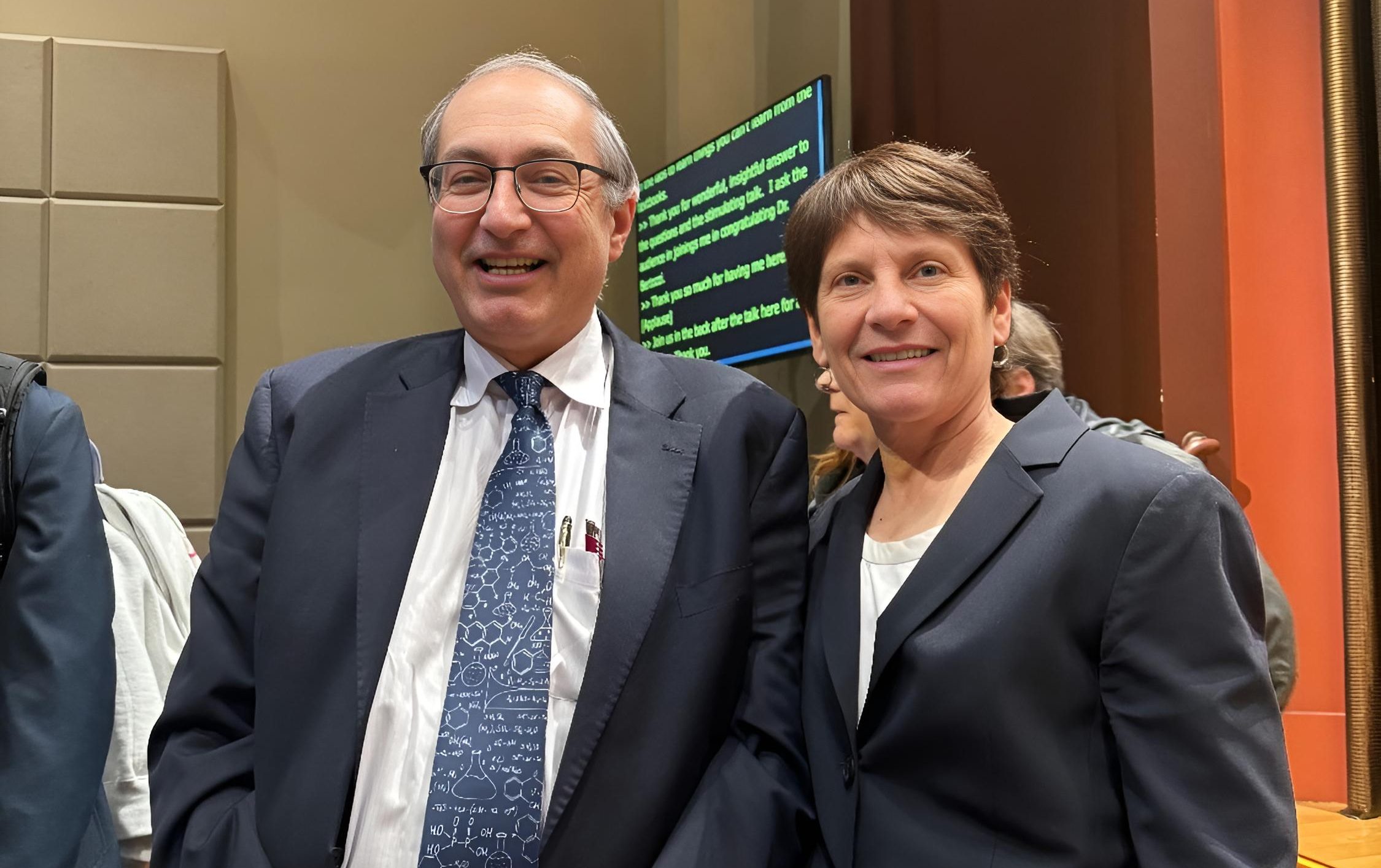Wafik S. El-Deiry, the Director of the Legorreta Cancer Center of Brown University, posted on LinkedIn:
“Thank you Dr. Carolyn Bertozzi for an amazing and inspiring lecture at Brown University, I wore my chemistry tie today in honor of your visit to Providence and Brown University.
“Chemistry in living cells or humans was not possible when I started working in the field of chemistry in the mid-1990’s at University of California, Berkeley.
‘Sialic acid builds up on the surface of cancer cells with higher density like a jungle’.
Dr. Bertozzi became interested in imaging the sugars during post-doctoral work at University of California, San Francisco.
She attended a conference in Europe where Dr. Werner Reutter spoke and she realized metabolic engineering could be leveraged towards her goal. She drew a diagram and used it in her job talks since 1994.
She pursued bio-orthogonal chemistry and converted an azide to an amine which led to the Staudinger ligation, the first bioorthogonal reaction. Then fed cells azide-modified sugars and labeled surface glycans. Then her students did it in mice! “The chemistry worked in mice.”
She then wanted the reactions to run faster taking advantage of Huisgen reaction. But even that was slow and not practical in vivo. Then came ‘click chemistry’. But copper catalyst was toxic in vivo. She described ‘ring strain’ which builds up strain energy and makes reactions run faster. Nick Agard a previous Brown undergraduate who worked with others in the lab made ‘cycloalkynes with tunable reactivity’.
The lab created substrates without toxic copper but decided to focus on zebrafish, a great translucent model of development over a 5-day period. Spatiotemporal analysis of sugars in vivo became possible. By labeling DNA, membrane proteins and cell surface glycans whose density was altered during cell division. The lab learned about new functions of the glycans in vivo with elegant molecular imaging.
Lots of companies have had efforts in the field. Her recent work has focused on a why tumors become rich in sialic acid and how to improve cancer immunotherapy. She described the Siglec family of lectins that modulate immune checkpoint function. But there are 14 of them to block! So she focused on the ligands. How do you block sialic acid? It was obvious to her to make a molecular lawnmower as a trastuzumab antibody-sialidase conjugate therapeutic!
The in vivo studies worked and the strategy has been translated through Palleon Pharmaceuticals, a company Dr. Bertozzi cofounded.
Very inspiring lecture.
In discussion, Dr. Bertozzi appreciates being at a medical campus at Stanford University for translation and where she’s started 11 companies and where students work on a thesis and then start a company.
Dr. Bertozzi’s career advice: no blanket statement because everyone is different. She’s gotten bad career advice herself that didn’t work for her.
Not into 5-year plans. “Contribute something and learn something every day” as a formula for success.
The ultimate impact of one’s work may not be realized for decades according to Dr. Bertozzi.”
Source: Wafik S. El-Deiry/LinkedIn

